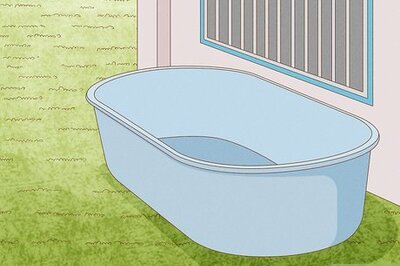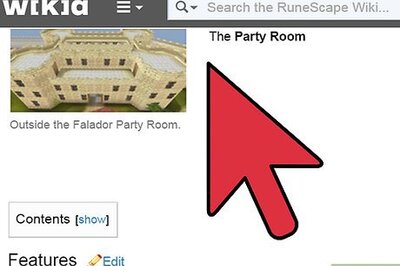
views
Caring for Yourself
Learn to recognize the symptoms of a disc bulge. They can include muscle weakness, loss of mobility or acute pain in the neck. There may also be numbness, tingling or sharp pains radiating down the neck and into the arm, shoulder or hand, because the bulge is being compressed into the nerve.
Ice your neck immediately after the pain occurs. This has been shown to reduce swelling and decrease pain by numbing the area. Ice periodically for twenty minute periods throughout the first day or two.
Take a nonsteroidal anti-inflammatory. These include ibuprofen, aspirin or Aleve. Begin immediately after the pain starts. Take the anti-inflammatory regularly for a few days, but do not take more than 2400 mg per day.
Switch to moist heat. After the first day or two switch from icing the affected area to heating it. Use a bath, shower or hot towel to apply moist heat. This can help to calm the muscles. When a disc herniation occurs, the muscles surrounding the cervical spine often seize up.
Limit activities that affect your neck for a few days. Typically a bulging disc will improve in a few days if allowed to recover. Bed rest is not required, but limiting rotation or bad posture for a few days and resting the neck by lying down occasionally should help.
Seeking Professional Medical Assistance
Make a doctor's appointment with your general practitioner. This is necessary if the pain is extremely severe, you have major loss of function after 72 hours, or the pain has continued after self-treatment for a week. Tests may include palpitation, x-rays and range-of-motion tests. Your doctor may do the following: Your doctor might prescribe additional medication, including steroids and muscle relaxers like Robaxin and Soma. Prescribe a neck brace if there is severe pain and muscle weakness. This can be provided by a medical supply company in the area. Prescribe an imaging study after a few weeks or months, or if you show signs of neurologic compromise (numbness, tingling, weakness, clumsiness), to verify and better understand the injury. Possible imagining techniques include MRI, Myelogram, CT, or EMG.
Visit a physical therapist. Physical therapy includes stretches and straightening exercises, which strengthen the muscles that support the neck. It also is likely to include traction, which gently relieves the stress on the neck for short periods of time. Building strong abdominal muscles and lean body mass will also be important for preventing future re-injury.
Visit an occupational therapist. Occupational therapy may be necessary if the way you work or your daily routine has caused or aggravated the disc herniation. These therapists may be able to improve the way you walk, sit or stand to help reduce pain. Special care should be exercised when performing heavy lifting.
Visit a chiropractor. Chiropractic care may also be necessary in order to restore mobility in the neck and to open up the joint in order for the disc to return to its normal position. You do not need a doctor's referral in order to go to a chiropractor.
Seek surgery. Consider surgery only if conservative treatments were attempted and failed to produce results after a period of at least six weeks or if you have a large herniation with neurologic compromise. Your general practitioner will refer you to a specialist for advice about these procedures. Procedures include an anterior cervical discectomy or artificial disc replacement. Procedures typically require the disc to be removed.




















Comments
0 comment